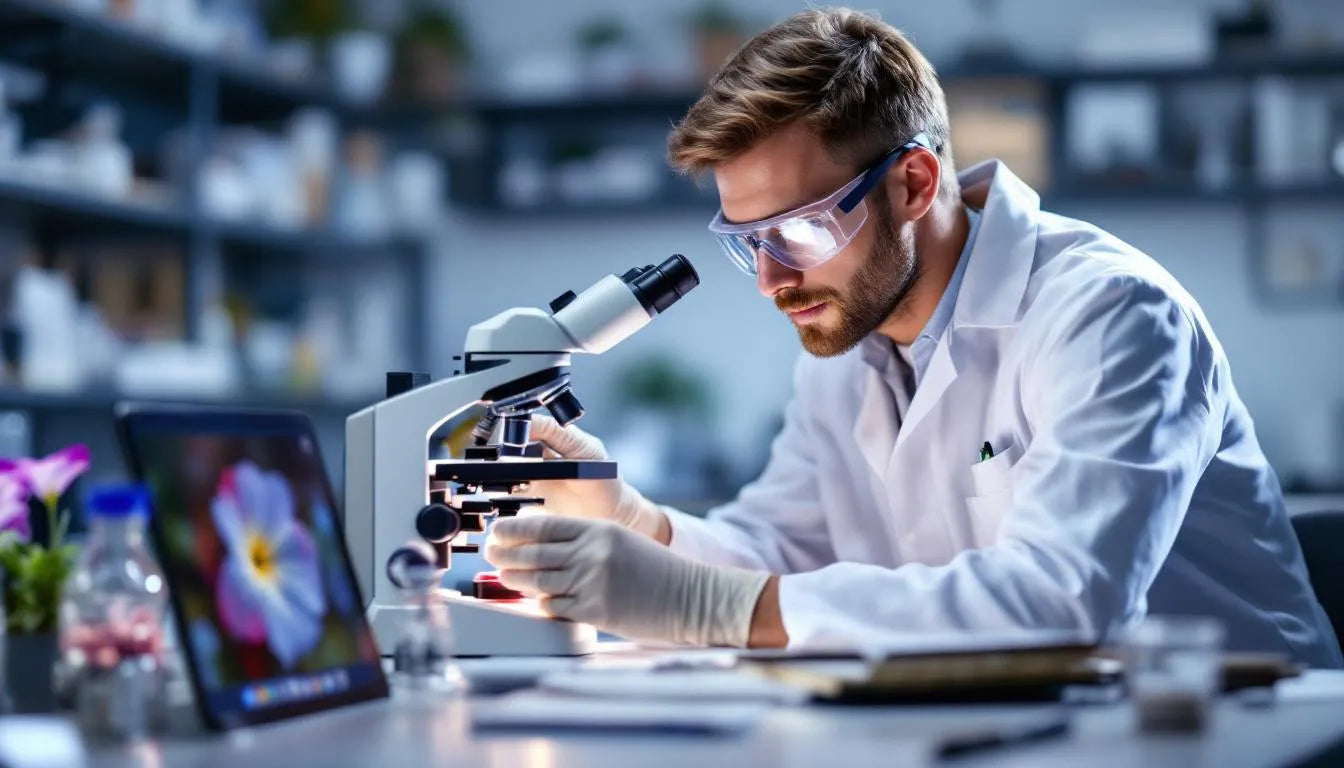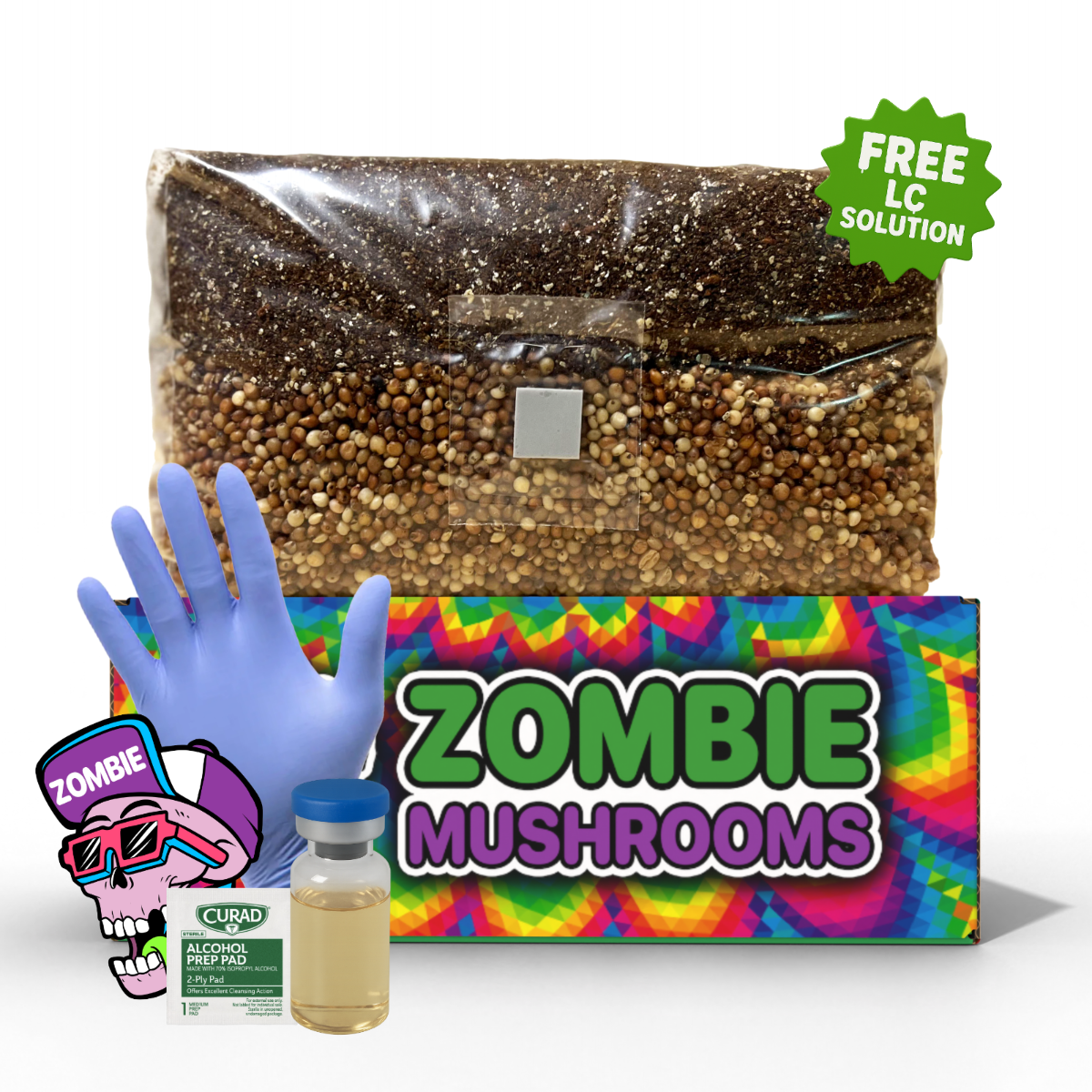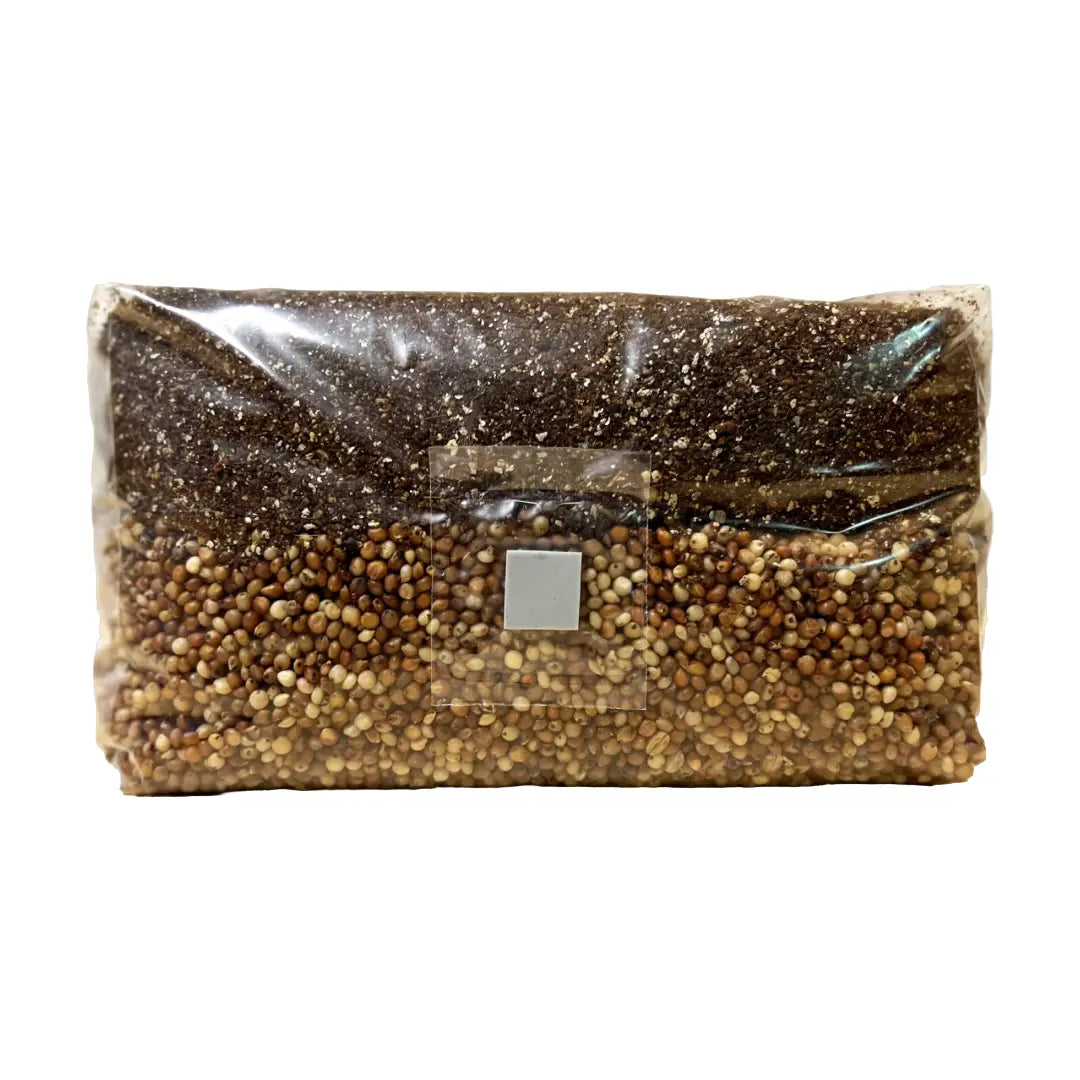⬇️ Prefer to listen instead? ⬇️
- 🧪 Researchers found where the lysergic acid in morning glory seeds comes from. It's a fungus that lives inside the plants.
- 🔬 The fungus, Periglandula clandestina, lives inside morning glory plants and makes ergot alkaloids.
- 🌿 People from old cultures used morning glory seeds for spiritual visions a long time before modern science knew their chemistry.
- 💊 Lysergic acid is linked to LSD. It is also important for modern medicines like those for migraines and Parkinson’s disease.
- 🧠 Finding fungi that live inside plants could help people find new treatments. It could also add more to studying psychedelics around the world.
Morning Glory Acid: Did We Finally Find the Source?
Morning glory seeds have made scientists, psychonauts, and plant experts wonder for many years because they have effects like LSD. People knew these seeds had chemicals like lysergic acid. But scientists didn't know where these chemicals came from until recently. Now, a big discovery shows that a hidden fungus living with the plant might be the real source of its mind-altering power. This changes how we see both psychedelic studies and how plants work.

Morning Glories and Psychedelics: A Historical Link
People have linked morning glories and altered states of consciousness for hundreds of years. This goes back to sacred traditions. Native peoples in places like Mexico used morning glory seeds in ceremonies to see the future and get spiritual ideas. They called the plant "ololiuhqui," which means "round thing." They said the effects gave them strong visions and deep thoughts, like the effects people report from psychedelics today.
Later, in the 1900s, Western scientists studied these traditions. They found that seeds from some morning glory plants have chemicals called ergot alkaloids. These chemicals are like LSD. This discovery was confusing. The strong effects and chemical structures pointed to lysergic acid. But scientists knew that type of chemical usually comes from fungi, not plants. Yet, they didn't see any fungus with the seeds.
Scientists thought maybe a fungus lived inside the plant with it. But they didn't have the right tools to prove it until much later. They also needed some luck.

Meet Lysergic Acid: The Precursor to LSD
Lysergic acid is the main chemical part of LSD (lysergic acid diethylamide). Albert Hofmann, a Swiss chemist, first made LSD in 1938. Hofmann got LSD from Claviceps purpurea. This is a fungus that grows on rye grain. He was looking for medicines when he found one of the strongest psychedelics known.
Lysergic acid is part of a bigger group of chemicals called ergot alkaloids. Besides changing the mind, ergot alkaloids are used in modern medicine. They treat migraines, help stop bleeding after giving birth, and help with brain problems like Parkinson’s disease. So, finding natural places where lysergic acid comes from is important for studying the brain and making medicine.
For a while, scientists thought plants like morning glory or Hawaiian Baby Woodrose made lysergic acid on their own. But this didn't make sense. Plants usually don't have what they need inside them to make ergot alkaloids. Ergot alkaloids start in fungi. So how could these plants make them?
This question was a big mystery in plant science for 100 years.

The Search for the LSD Fungus in Morning Glories
Morning glory seeds clearly had chemicals like lysergic acid in them, pointing to ergot alkaloids. But scientists didn't know where these came from for many years. Scientists looked at different parts of the plant. They used dyes to see if a fungus was there. They also took chemicals out, hoping to find a way the plant made the stuff, or maybe a tiny living thing.
But they didn't find it. The ways they looked weren't good enough to see a tiny fungus living inside. Or maybe scientists were just looking in the wrong place. Interestingly, the chemicals were often in wild morning glories but not in plants grown for stores. This suggested something in nature, maybe a relationship, was missing in large-scale growing.
Scientists still thought a tiny fungus living inside the plant was the most likely source. But they just couldn't find it.

The Breakthrough Discovery at West Virginia University
Finally, a major change happened in 2025. It came from an unexpected place: a college student named Corinne Hazel at West Virginia University. She worked with Dr. Daniel Panaccione, a scientist who studies plants and fungi. Hazel looked at a regular morning glory seed. She saw a small fuzzy spot on the outside coat.
This wasn't pollen or rot. Hazel looked at it under a microscope. And then she used gene testing. A small research grant helped pay for this. She proved something scientists had thought for a long time but never proved. A hidden fungus was inside the seed. It was living inside the plant parts.
The research team named and put this fungus into a category. It wasn't just living with the plant. It was actually making chemicals like lysergic acid.

Periglandula clandestina: A Hidden Partner
Hazel's finding led to naming a new kind of fungus: Periglandula clandestina. This fungus doesn't live on the outside of the plant. It lives inside it. Some fungi cause sickness or rot. But P. clandestina seems to help the morning glory plant. They have a relationship where both benefit. The plant gives it food and a place to live. And the fungus gives the seed strong chemicals.
These chemicals can stop animals from eating the plant and protect it from germs. This is often why plants have relationships with fungi.
Some fungi, like mushrooms, you can see on the outside. But P. clandestina doesn't grow like that. It lives completely inside the plant. This makes it very hard to find without using special tools that look at tiny parts, like DNA.

The Science Behind the Fungus: What We Found
Looking at the fungus's genes (its DNA) showed many genes needed to make ergot alkaloids. These genes are like the ones in the fungus that grows on rye, Claviceps purpurea. This proves they can make lysergic acid.
Scientists saw that the groups of genes for making these chemicals looked very much like those in other fungi known to make things like LSD. This shows these fungi are related over a long time. They are an old group that makes ergot. And they found ways to live inside different plants, not just grains like rye, but also garden plants like morning glories.
This brings up new questions. Did these fungi share genes? How many other plants have hidden fungi inside them that make chemicals that change the mind?

How Ergot Alkaloids Are Used in Medicine
The word "ergot" might sound scary. Long ago, people got sick from eating rye with this fungus on it ("St. Anthony's Fire"). But today, doctors use ergot chemicals in safe ways.
Now, chemicals from ergot are used to:
- Treat bad migraines (like medicines with ergotamine)
- Help stop bleeding after giving birth (like methylergometrine)
- Make symptoms of Parkinson’s disease better (like bromocriptine)
But these uses need strict rules. Doctors must control the amount, make sure it's pure, and watch for side effects. That's because these chemicals can narrow blood vessels.
Understanding how P. clandestina makes these chemicals inside the plant could help scientists. They might learn to make chemicals that are safer and work for specific problems. This could lead to new medicines, maybe even using psychedelic treatments for mental health. Studying mental health this way is becoming more important.

Why This Is Interesting for People Who Like Fungi and Scientists
If you're interested in fungi, whether you're a scientist or just curious, this discovery teaches something important. The most interesting fungi aren't always the ones you see growing under logs. They can be hidden inside seeds.
Studying fungi used to often be about finding them in nature. But now, using tools that look at tiny things like DNA, it's also about finding new things and understanding how they work.
Also, this discovery shows:
- How useful it is when different science areas work together (like plant science and studying tiny living things)
- Young scientists can still make big discoveries, even without a lot of money or tools
- How fungi living inside plants can change the chemicals inside the plant a lot
This should make people want to look closely at everyday plants. We just don't know how many secret relationships between plants and fungi are changing the chemicals nature makes.

Can This Discovery Help People Grow Mushrooms or Use Grow Kits?
It's pretty easy to grow fungi like psilocybin mushrooms in a controlled place using known ways to make them produce mushrooms. But P. clandestina is much harder.
It does not produce mushrooms.
It lives inside plant parts like a hidden guest.
It has long relationships with certain plants.
But, understanding how these fungi live inside plants and make chemicals can lead to new ways of growing plants. Maybe in the future, grow kits won't just grow mushrooms. Maybe they will let you study fungi inside plants and see how they add chemicals. This could be useful for strange or medicine plants.
At Zombie Mushrooms, we think you should learn about fungi in more ways than just growing shrooms. Look in the soil, in seeds, and see how fungi live with other things.

How Fungi, Nature, and Changed Thinking Are Linked
This discovery is important in many ways. People are looking at psychedelics again, with respect and science. Discoveries like this fit into that. Just knowing that a common garden plant has a hidden partner that makes mind-altering chemicals is amazing.
It shows:
- Nature often hides powerful chemicals right where you can see them
- Fungi are important not just for breaking things down, but for making many different chemicals
- Different living things connecting in ways that lead to surprising changes
We're starting to see natural chemicals again. Not just for fun, but as things that can help us heal, understand, and connect. Thinking about how a seed can lead to a mind-altering trip, all thanks to a hidden fungus, connects old traditions with today's science.

What This Could Mean for Studying Psychedelics in the Future
Hazel's work on P. clandestina is not just for books. It shows how things are connected. It suggests that chemicals that change the mind might come from complicated relationships between different living things.
It makes scientists think about:
- Looking again at plants that seem to do nothing, to see if fungi inside them are doing something
- Adding more fungi to the list of those used in medicine
- Thinking about fungi that live inside plants as a way to find new medicines
Governments and groups are starting to say it's okay to study psychedelics again. Discoveries like this prove we are just starting to find out what nature really offers. Using natural chemicals to help with things like PTSD, severe depression, or healing from bad experiences could change a lot. This might happen because of the quiet, unknown fungi around us and inside plants.
How Fungi Lead to Discovery
From old Aztec ceremonies to one seed with fuzz on it, the story of lysergic acid shows that amazing things are often hidden. Fungi do more than break things down. They change their surroundings and open up new ways of seeing things.
At Zombie Mushrooms, we like to show this hidden world. We help people who are interested, students, and those curious about mind-altering substances learn about what fungi can do in the future. We offer education, grow kits, and a group that thinks the next big new chemical could be growing close by.
Are you curious about fungi that make things, connect things, and change things? Get a Zombie Mushrooms grow kit. Connect with people who think science and nature's deeper parts meet.
References
WVU Today. (2025, June 2). WVU student makes long-awaited discovery of mystery fungus sought by LSD’s inventor. Retrieved from https://wvutoday.wvu.edu/stories/2025/06/02/
Panaccione, D. (2025). Interview with WVU Today. Davis-Michael Professor of Plant and Soil Sciences.



